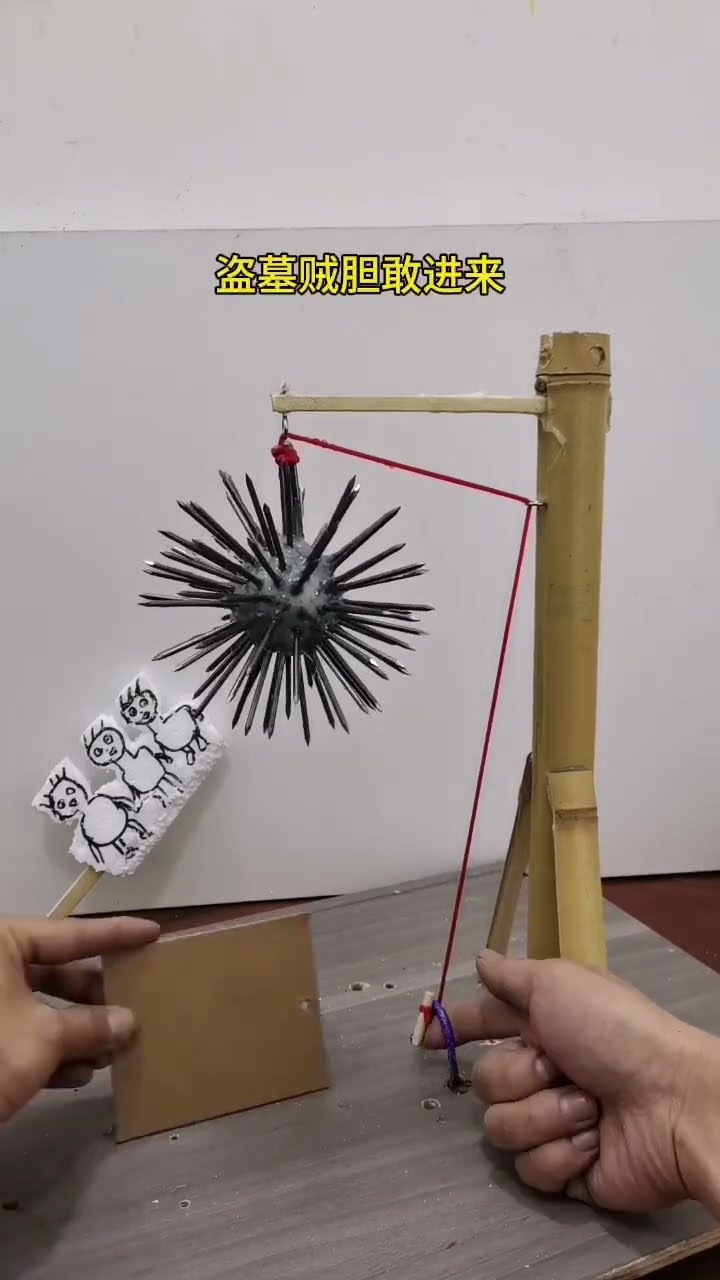The "secret nail mechanism" you're referring to likely pertains to the hidden locking or sealing devices used in ancient underground palace gates, particularly in tombs or sacred structures. These mechanisms were designed to prevent unauthorized entry and protect treasures or remains inside. While detailed records are rare (as these were often secretive technologies), historical and archaeological findings provide some insights:
1. Stone Slab Doors with Hidden Latches
Many ancient tombs (e.g., Egyptian pyramids, Chinese imperial tombs) used massive stone slabs as doors, held in place by counterweights or stone bolts.
A "hidden nail" could refer to a latch system where a stone or metal pin was inserted diagonally into the door and frame, invisible from the outside.
2. Self-Locking Mechanisms (Trigger Traps)
Some tombs had "deadfall" systems where removing a keystone or weight would collapse part of the structure or release traps (e.g., sand, rolling stones).
In China, the tomb of Qin Shi Huang reportedly had crossbow traps and mercury moats, though mechanical details remain speculative.
3. Magnetic or Gravity-Based Locks
Legends suggest certain gates used magnetic stones (lodestone) to hold doors shut until a key object (e.g., a metal token) was inserted to disrupt the magnetic field.
4. The "Sealing Stone" Concept
In Ming Dynasty tombs (e.g., Dingling), gates were sealed with a "stone bolt" (自来石, zilai shi), a vertical stone pillar placed behind the door from the inside. When the door closed, the pillar slid into a groove, locking it. Robbers had to break the door to bypass it.
5. Symbolic Nails or Ritual Seals
Some "nails" may have been ceremonial. For example, bronze nails in Zhou Dynasty tombs symbolized warding off evil, while others were part of symbolic "sealing" rituals.
Modern Discoveries
In 2016, archaeologists found a 1,500-year-old tomb in China with a stone door locked by a hidden iron latch, activated when the door was closed.
Challenges in Study
Many mechanisms were destroyed by looters or decay.
Written records are scarce; most knowledge comes from forensic archaeology.
If you're referring to a specific culture or tomb, more details could narrow down the answer. The ingenuity of these systems highlights ancient engineers' sophistication in protecting sacred spaces.



.jpg)